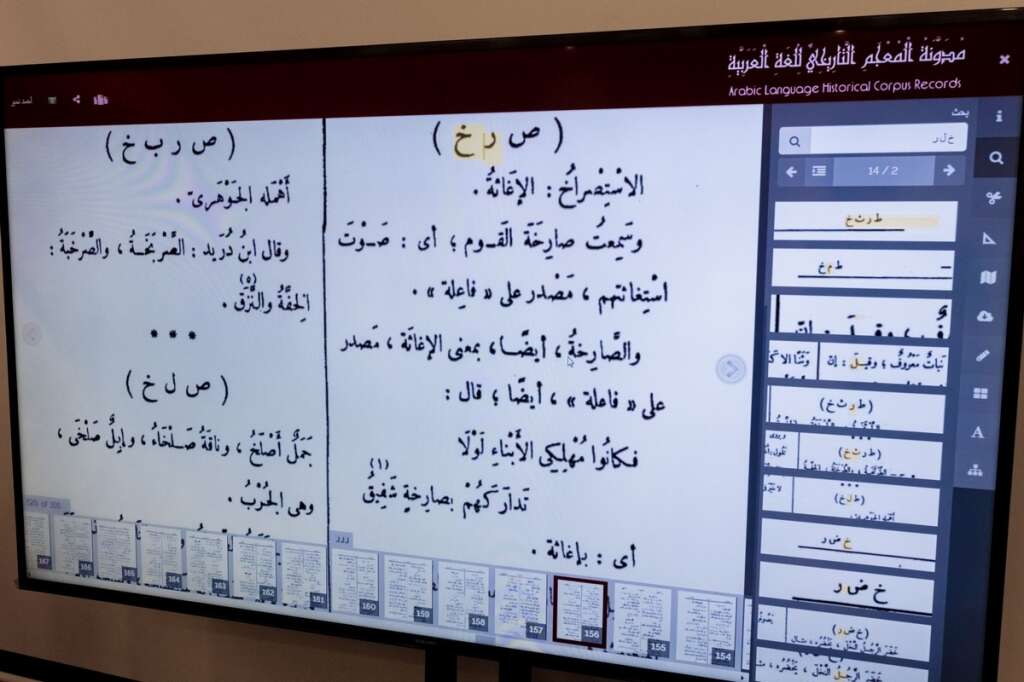Sharjah project to decode evolution of Arabic in past 17 centuries
 Staff Reporter /Sharjah
Staff Reporter /Sharjah
(Supplied photo)
A massive digital library with more than 40,000 titles will be developed as part of the project.
A project to chronicle the evolution of the Arabic language in the past 17 centuries has been launched in Sharjah.
The Arabic Language Academy (ALA) in Sharjah will lead the initiative with support from the Cairo-based Union of Arab Scientific Language Academies.
In the next six years, researchers, linguists, editors and experts from 10 Arabic language academies will complete the documenting and researching the history and evolution of all Arabic words. Documenting five distinct time periods, the corpus of historical Arabic will serve as a linguistic resource for researchers, academia, linguists and students worldwide.
The project will be the first one to cover the language evolution from the pre-Islamic period through its growth during the Islamic era and several dynasties to its modern form.
“The Arabic language corpus had long been delayed due to arbitrary planning, financial constraints and the sheer scale of the endeavour. It is a matter of great pride that Sharjah – an emirate recognised globally for its role in disseminating culture and knowledge – has reignited this project under the leadership of His Highness Sheikh Dr Sultan bin Muhammad Al Qasimi, Member of the Supreme Council and Ruler of Sharjah. It is solely due to his unyielding dedication that the project has finally managed to take off in the right direction,” said Dr Mohammed Safi Al Mostaghanemi, ALA Secretary-General.
“The project is an exemplary feat that will shine a light on the richness of the Arabic language. No other project in recent times has drawn as much attention from linguists and Arabic language enthusiasts as this corpus, especially since several world languages have developed their own corpora – most notably Romance and Germanic languages such as French and English,” he added.
Digital repository of ancient Arabic
With the digitisation of nearly 20,000 Arabic books, manuscripts, sources, and historical documents, the historical corpus will be a portal into 17 centuries of the Arabic language which includes engravings and antiquities dating back to the third century before Islam.
The corpus will answer several questions about language use as researchers go to the original root of each word, and methodically trace the usage of Arabic vocabulary in five distinct time periods – pre-Islamic period; the Islamic era from Hijri years 1AH to 132AH; the Abbasid Caliphate; the development of nation-states; and the modern-day era.
On completion, apart from a physical book, the project will also see the development of a massive digital library that will host more than 40,000 titles, extracts and documents in fields of literature, poetry, philosophy, history and the sciences.
Many of these will be available in a digital format for the first time. The use of optical character recognition (OCR) technology for all documents will further enable researchers to find the information they require quickly within a broad historical context.
Arabic in the past 17 centuries
With roots that lie in classical and modern Semitic, African and Asian languages, Arabic is a rich and sophisticated language that has had an enduring legacy in shaping civilisations across the Middle East and Africa. Spoken by more than 400 million people in these regions, it was also the medium through which philosophers, mathematicians, and astronomers pursued knowledge during the Golden Age of Islam.
What linguists and researchers will do as part of the project
> Document word roots, derivatives, and phonetic variations
> Outline the development and evolution of terms used throughout the centuries
> Document the entry of new words into the language at different periods of time
> Detail semantic changes – be it semantic shift, progression, development, or drift, whether through Arabic speakers or speakers of other Semitic languages that have influenced the Arabic language.
> Delve into the scientific study of the Arabic language – syntax, morphology, fiqh (Islamic jurisprudence), phonetics, arud (Arabic prosody, or poetic metres), rhetoric, and more.
> A specialised committee of Semitic language will analyse word comparisons with Semitic languages – Hebrew, Akkadian, Syriac, Abyssinian among others
Use optical character recognition (OCR) technology for all documents
https://www.khaleejtimes.com/uae/sharjah/sharjah-project-to-decode-evolution-of-arabic-in-past-17-centuries-
